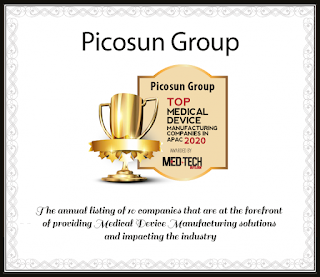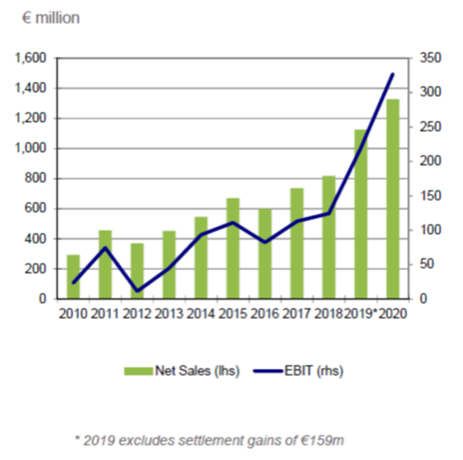ESPOO, Finland, 12th February 2021 – Picosun Group, the leading provider of AGILE ALD® (Atomic Layer Deposition) thin film coating technology and solutions, reports excellent aseptic properties measured from its ALD materials.
“The aseptic properties of our ALD films are so excellent that they surpass even the strictest requirements of the medical implant industry."
Numerous ALD oxide coatings deposited with Picosun’s processes showed remarkable reduction of microbial growth and had low values of bacterial endotoxin contamination(*). The coatings were characterized by an independent third party laboratory according to ISO 22196:2011 antimicrobial standard and ANSI/AAMI ST72:2019 bacterial endotoxin standards. These results, along with the earlier tests validating the non-cytotoxicity of Picosun’s ALD films, prove the safety and aseptic benefits of these materials in medical devices, both implanted and external ones.

Millions of people worldwide live with medical implants and the trend is towards even more complex solutions that combine highly advanced microelectronics with miniaturized devices embedded into sensitive areas of the body such as brain, spine, eyes, and heart. Protecting these devices from the corrosive environment of the human body, and vice versa, is of utmost importance considering the safety, correct operation, and lifetime of the implant.
Picosun is the trailblazer in providing medical ALD solutions to device manufacturers. Picosun’s ultra-thin, biocompatible ALD coatings guarantee hermetic encapsulation of the implanted device, with a fraction of film thickness compared to other coating methods and with superior film uniformity and conformality, ensuring pinhole-free coverage over even the smallest details of the device. Extended lifetime and operational reliability of the implant reduces the need for corrective or replacement surgeries, thus saving expensive hospital stays and improving the patient’s quality of life. For manufacturers, hermetic protective coating enables use of more common base materials, e.g. stainless steels instead of precious metals, which in turn makes the manufacturing process easier and saves costs.
“The aseptic properties of our ALD films are so excellent that they surpass even the strictest requirements of the medical implant industry. We are excited to bring our new, advanced medical ALD solutions to the market and help our customers keep spearheading their industries with safer, longer-lasting and user-friendly products,” states Juhani Taskinen, Head of Medical Business Area of Picosun Group.



%20(1).png)
















